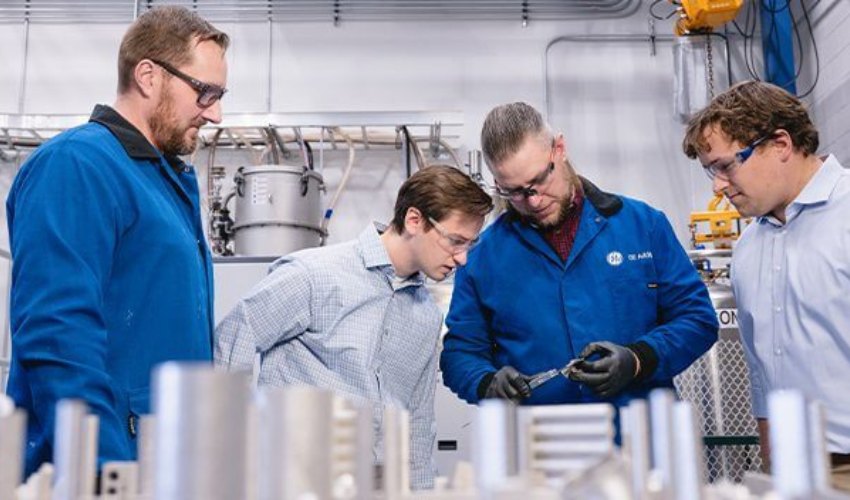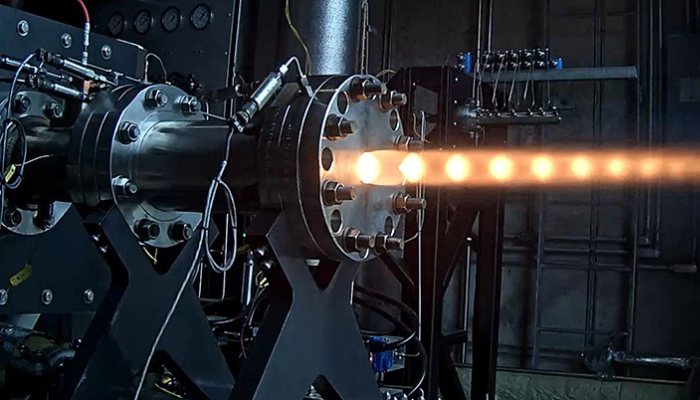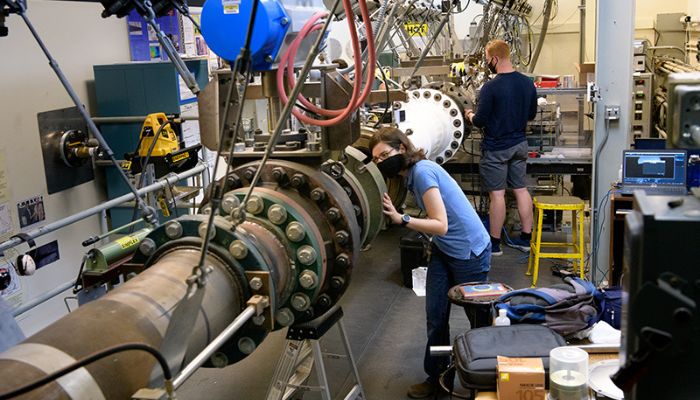Purdue Propels Hypersonic Research with 3D Printed Scramjet Prototypes

As aerospace technology advances, Purdue University‘s research continues to push the boundaries of hypersonic travel. Leveraging cutting-edge 3D printing technology, researchers at the Purdue Applied Research Institute (PARI) have successfully produced fully functional supersonic combustion ramjet (also known as scramjets) prototypes. These innovative and powerful engines have the potential to propel future aircraft at hypersonic speeds exceeding Mach 5.
Led by the Hypersonic Advanced Manufacturing Technology Center (HAMTC) at Purdue, this breakthrough signifies a monumental leap forward in the hypersonics industry. This is because the new scramjet design offers a cost-effective and time-saving approach to prototyping and manufacturing in the field.

Scramjet at Purdue’s Maurice J. Zucrow Laboratories
Scramjets are crucial in the aerospace industry for their ability to sustain combustion at incredibly high speeds, allowing aircraft to travel beyond Mach 2. Obtaining this speed is often particularly challenging, and as described by Nick Strahan, HAMTC senior test engineer, the task is akin to “lighting a candle in a hurricane,” as flames need to be sustained at rapid velocity. However, with innovative combustor designs and efficient fuel combustion techniques, Purdue researchers have overcome these challenges with the scramjet, paving the way for unprecedented advancements in aerospace technology.
The Role of Additive Manufacturing in Scramjet Development
Among the key elements driving this innovation is Purdue’s utilization of 3D printing technology, including the GE Concept Laser X Line 2000R, renowned as one of the world’s largest metal laser powder bed solutions, thanks to its capacity of 160 liters. This large-scale metal printer not only streamlines the manufacturing process but also enables the creation of the highly complex designs needed for the engines. Notably, the 2000R also minimizes part count, thus optimizing performance while simplifying production, and allows for increased weight reduction while still maintaining full functionality of the engines.
HAMTC’s executive director, Michael Sangid, spoke on the success of this project, stating, “The scramjet pilot project is a great example of our vertically integrated capabilities. We can take raw powder and turn it into representative test data from a fielded prototype in a few short months. This leverages the flexibility of additive manufacturing into the component’s design to increase efficiency.”

Purdue students work within Purdue’s Hypersonics and Applied Research Facility.
Purdue’s hypersonic research carries significant implications beyond technical advancements, extending to national security and defense. The enhanced production speed and cost-efficiency not only reduce expenses but also address the nation’s growing need for advanced hypersonic technologies. Moreover, by involving students in all project phases—from design to manufacturing and testing, this project will help foster a new generation proficient in highly sought-after, advanced hypersonic skills to meet the growing industry. You can learn more about this project by clicking here.
What do you think about Purdue’s use of 3D printing for prototyping of scramjets? Let us know in a comment below or on our LinkedIn, Facebook, and Twitter pages! Don’t forget to sign up for our free weekly newsletter here, the latest 3D printing news straight to your inbox! You can also find all our videos on our YouTube channel.
*All Photo Credits: Purdue University







